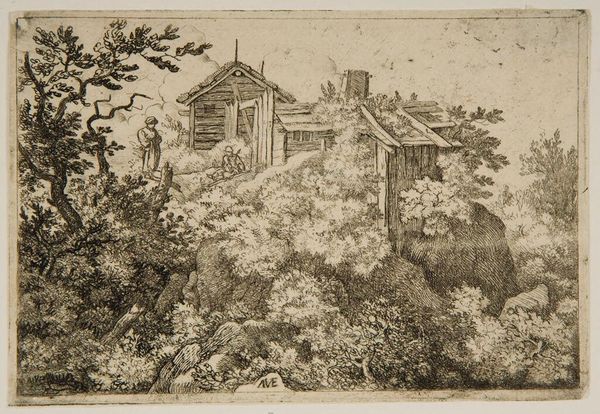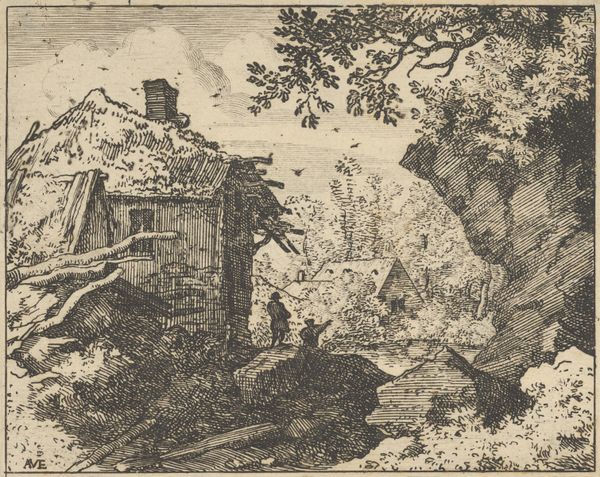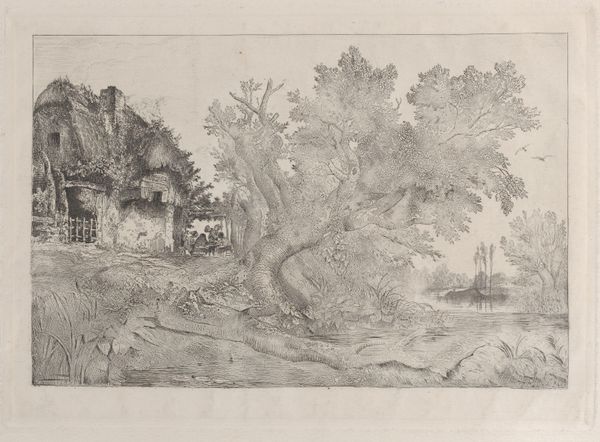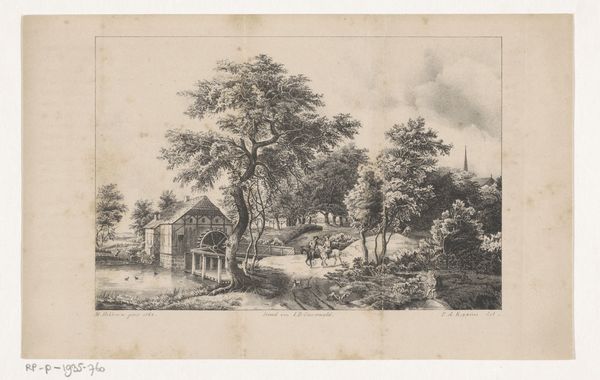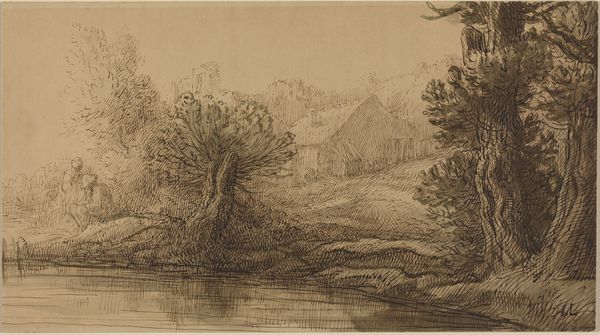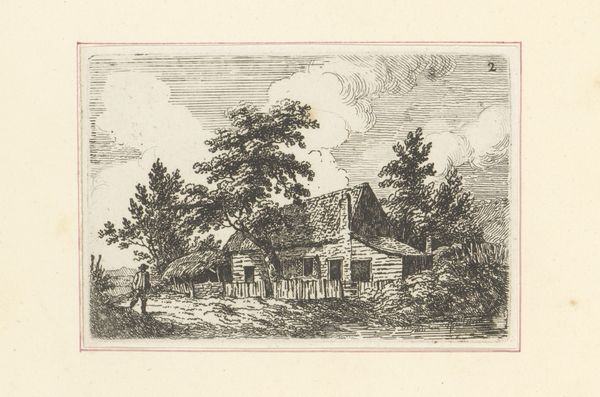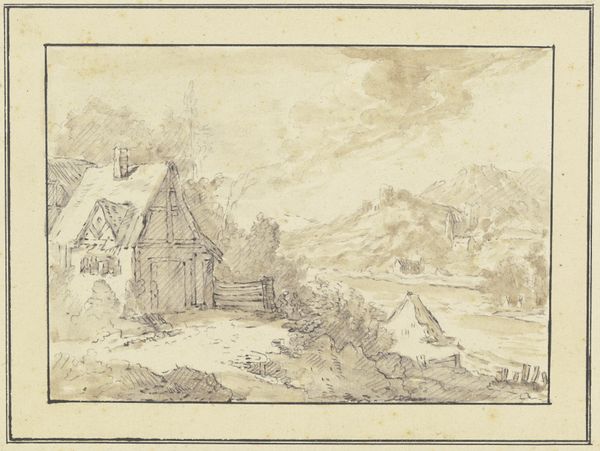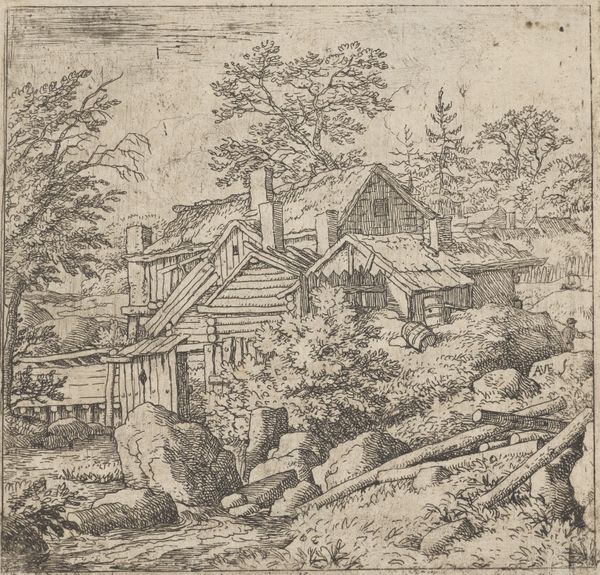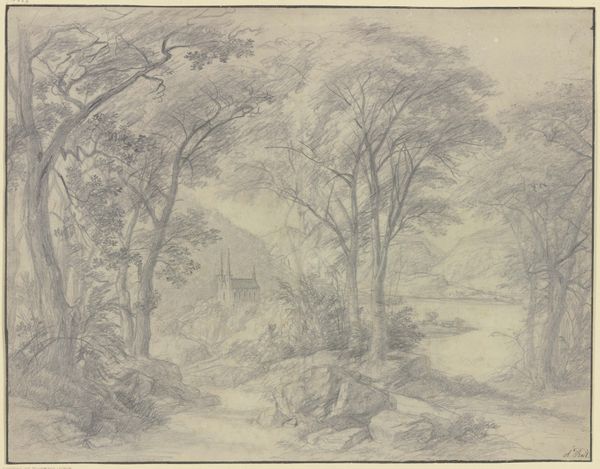
drawing, print, etching
#
drawing
#
baroque
#
dutch-golden-age
# print
#
etching
#
landscape
#
figuration
#
form
#
line
#
history-painting
Dimensions: Sheet: 3 15/16 × 5 5/8 in. (10 × 14.3 cm)
Copyright: Public Domain
Allart van Everdingen made this print, "The Three Cottages on the Hill," using etching, a process where a metal plate is coated with wax, then scratched into with a needle to expose the metal. Immersed in acid, the exposed lines are eaten away, allowing them to hold ink and transfer an image onto paper. The etching captures the rough textures of the cottages' wooden construction and the dense foliage surrounding them. The process allowed Everdingen to achieve a remarkable level of detail, from the thatched roofs to the rocky outcroppings, evoking a sense of rural life and the labor involved in building and maintaining these humble dwellings. While seemingly a simple landscape, the print reflects the social context of 17th-century Netherlands, where there was growing interest in depictions of rural life. Everdingen's choice of etching, a more accessible medium than painting, allowed for wider distribution of his work, bringing images of the countryside to urban audiences. By appreciating the materials, techniques, and cultural context behind "The Three Cottages on the Hill," we can look beyond the artwork and understand how art both reflects and shapes society.
Comments
No comments
Be the first to comment and join the conversation on the ultimate creative platform.
